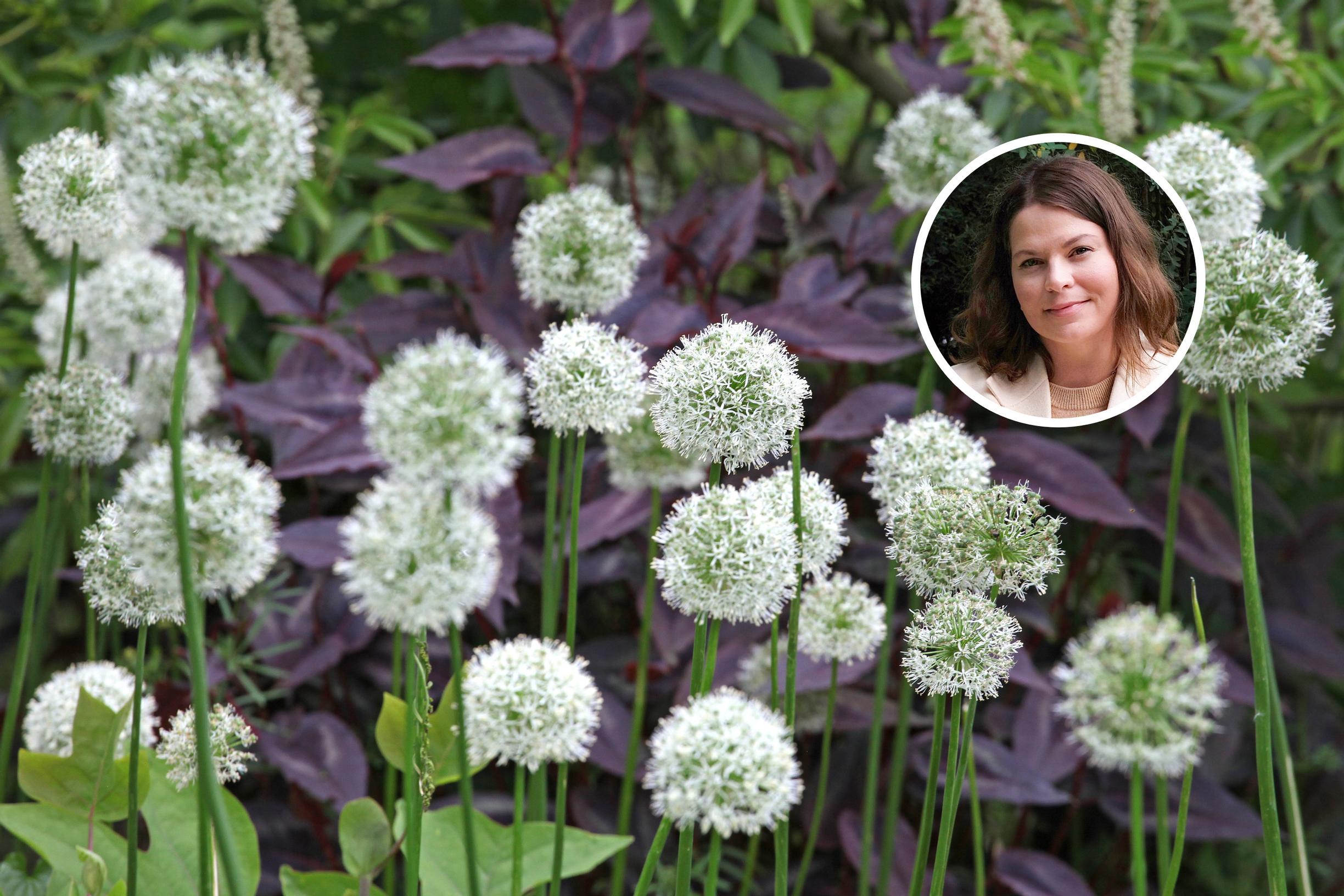
“Easy, perennial, and bloom for a long time”: a landscape designer’s guide to alliums
Landscape designer Suvi Tuokko-Harmoinen is inspired by the bold shapes of alliums and advises leaving space around their blossoms. Check out Suvi’s tips at the end of the article!
“When I show pictures of blooming alliums, my clients want them in their own gardens. Alliums have many great qualities: they’re easy, perennial, bloom for a long time, and spread nicely. Best of all, they offer a bold visual appeal—their flower heads are dramatic, eye-catching focal points that command attention in the garden.”
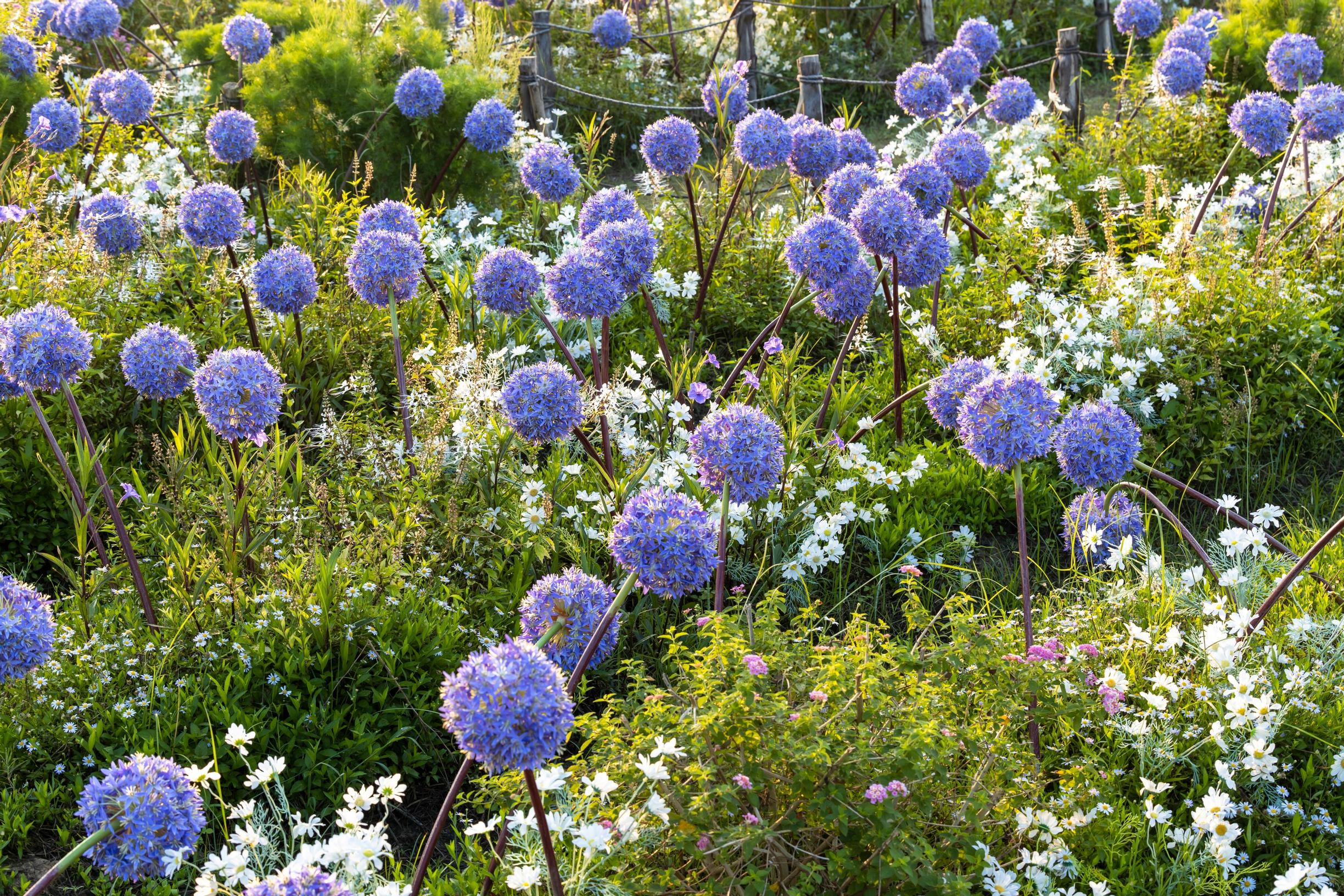
Alliums fit well with my design style, which is Scandinavian, natural, and abundant. I like to use them as pops of color, scattering bulbs among other plants to bring movement and bursts of color to the plantings. Large-flowered alliums work especially well with modern aesthetics: architectural lines, clean shapes, poured elements, and the rusty hue of corten steel pair beautifully with them. Meanwhile, the smaller-flowered species have a charming lightness, which suits layered, cottage-garden-style yards. Round-headed leek is one of my favorites—it’s not too over-the-top.
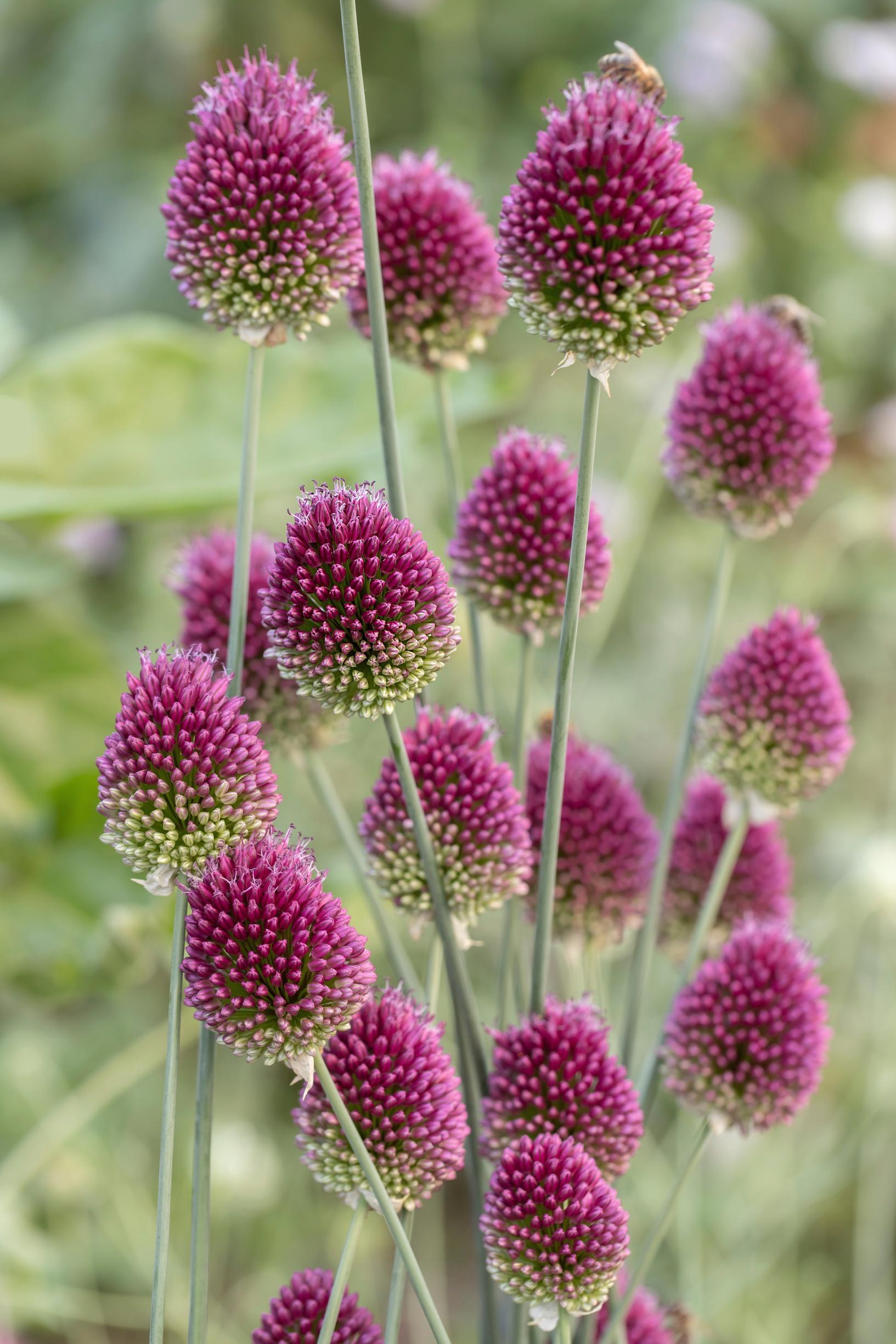
In one garden, I designed a broad strip of ‘Mount Everest’ allium between shrubby cinquefoil and a row of arborvitae.
Alliums’ color range reflects many people’s favorite hues. A soft purple-blue harmony can be enhanced by pairing alliums with catmint, wood sage, and hostas. An airy, hazy effect can be achieved with purple moor-grass or feather reed grass. Mixed plantings are practical, as perennials and grasses conveniently hide alliums’ withering leaves. Alliums can also be combined well with woody plants.
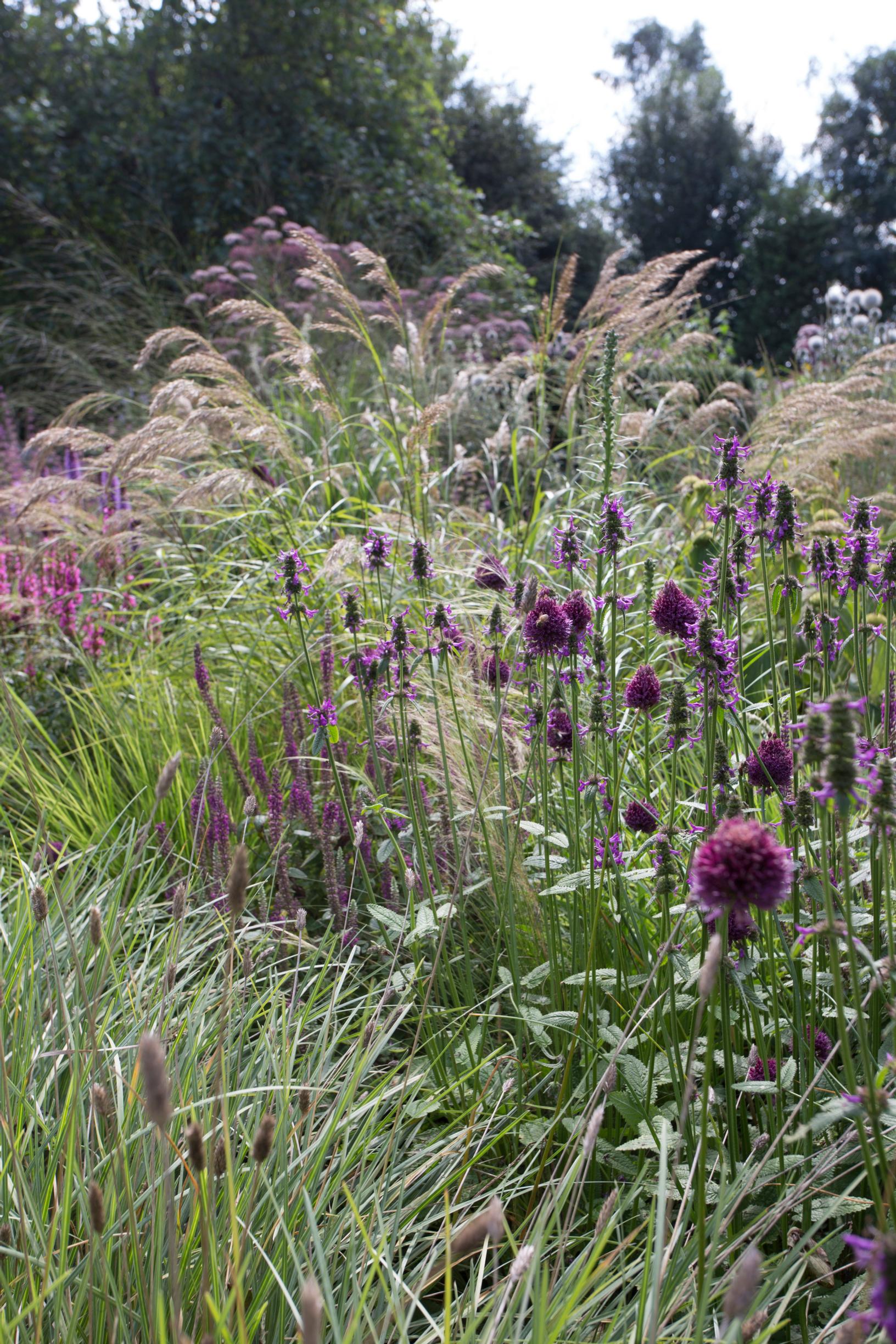
In one green-and-white garden, I designed a broad strip of ‘Mount Everest’ allium between shrubby cinquefoil and a row of arborvitae. The white flower clusters stand out among the shrubs, perfectly breaking up the green mass. In another project, I paired ‘Mount Everest’ with guelder rose. It looks amazing when the pale, rounded shape is repeated in different sizes and heights.”
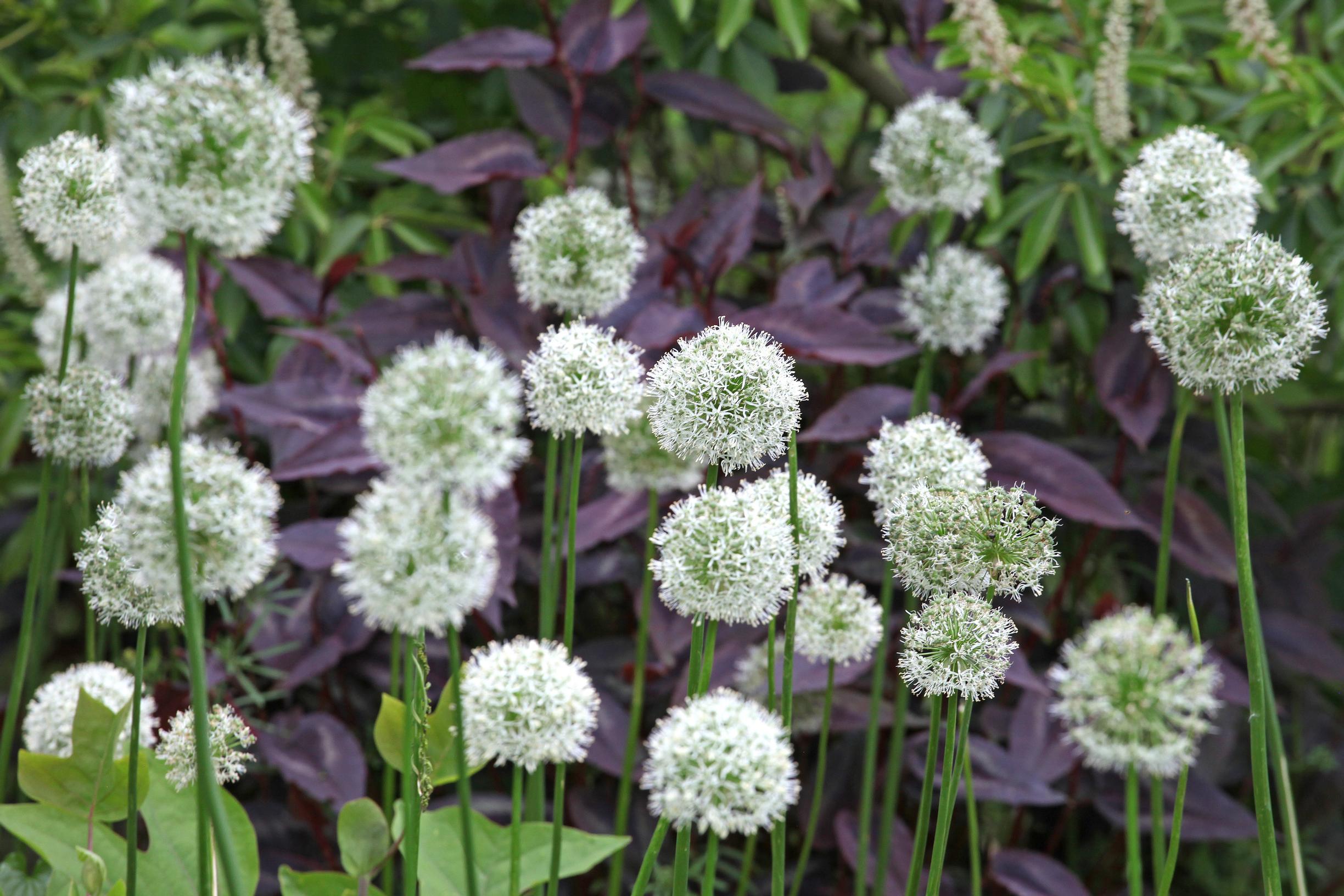
Suvi’s four tips for using alliums in the garden
- Give alliums some visual space; they need air around them.
- Use alliums in small numbers alongside other species or alone in large masses.
- Enhance alliums’ colors with perennials that share a similar hue.
- Plant the bulbs in a sunny, relatively dry spot.



